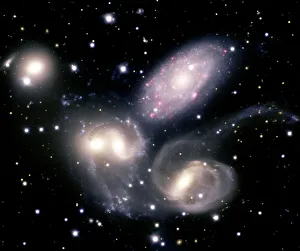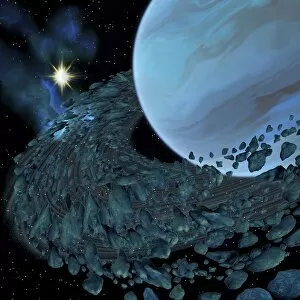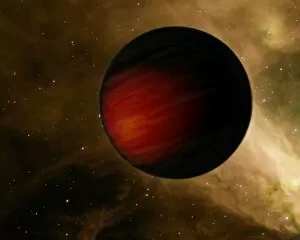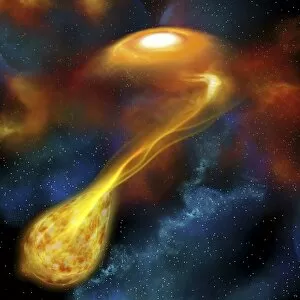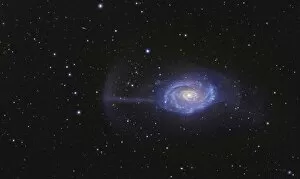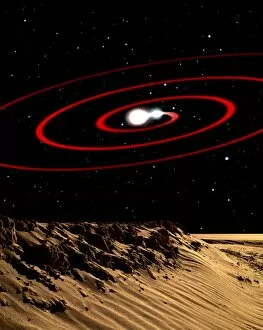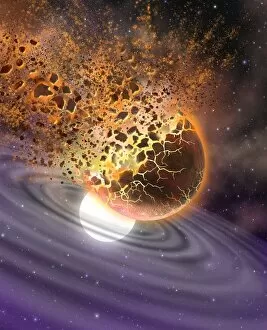Tidal Forces Collection
"Tidal Forces: A Cosmic Dance Unveiled" Stephans Quintet: Witness the celestial ballet of five galaxies, locked in a gravitational embrace
All Professionally Made to Order for Quick Shipping
"Tidal Forces: A Cosmic Dance Unveiled" Stephans Quintet: Witness the celestial ballet of five galaxies, locked in a gravitational embrace, where tidal forces shape their intricate dance. A Planetary Ring's Serenade: Behold the mesmerizing orbit of a planetary ring encircling a vibrant blue planet, as tidal forces sculpt its ethereal beauty. 51 Pegasi's Fiery Encounter: Immerse yourself in an artist's vision of a Hot Jupiter, entwined with its star named 51 Pegasi, feeling the relentless pull amidst scorching rays. NGC 3628 - The Hamburger Galaxy: Explore the enigmatic Hamburger Galaxy and marvel at how they have shaped its unique appearance over cosmic ages. Searing Embrace: Observe a Jupiter-like planet basking in the searing embrace of its nearby sun, experiencing tidal forces that mold its atmospheric dynamics. Exoplanetary Rendezvous: Journey into an artist's concept depicting a Hot Jupiter extrasolar planet gracefully circling around a sun-like star under the influence of powerful tidal forces. Io's Tidal Symphony: Delve into an enlightening diagram unraveling the workings on Jupiter's moon Io, revealing stunning volcanic activity driven by this cosmic phenomenon. The Splinter Galaxy Revealed: Gaze upon the captivating Splinter Galaxy (NGC 5907), where gravitational tides have stretched it into an elongated form across vast cosmic distances. Whirlpool Galaxy Spin Cycle: Marvel at nature’s grand design as two galaxies engage in an elegant spiral dance fueled by mutual gravitational tides within their binary system near a black hole’s domain. Celestial Duo from Afar: From afar planets gaze upon double stars locked in eternal orbit; witness this awe-inspiring sight through their eyes, as tidal forces shape their cosmic vista.

